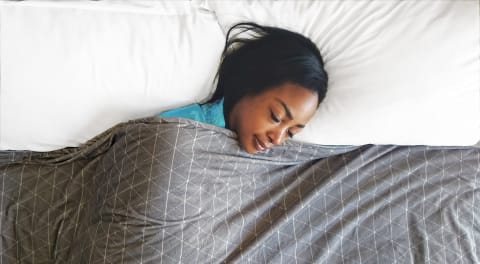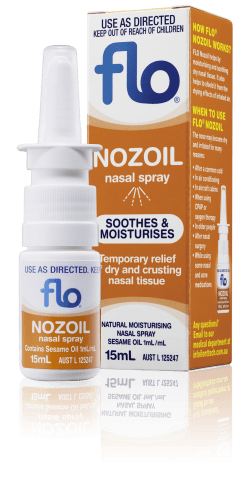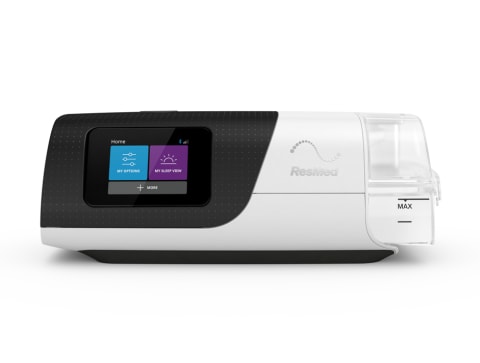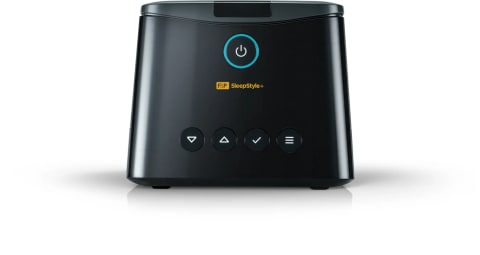CPAP Machine How Does it Work
How CPAP Machines Work
A CPAP machine helps treat obstructive Sleep Apnea
Obstructive sleep apnea (OSA) is a common sleep disorder caused by the upper airway collapsing or narrowing during sleep. This can lead to loud snoring and repeated pauses in breathing, which leave sufferers exhausted during the day.
Continuous Positive Airway Pressure (CPAP) therapy is the gold-standard treatment for OSA. CPAP uses a small pump to deliver gentle pressurised air through a hose and mask into the nose and/or mouth, effectively acting like a pneumatic splint to hold the throat open.
In practice, the machine’s airflow pushes back against the relaxing airway tissues, preventing apneas and improving blood oxygen levels. By keeping the airway passable, CPAP prevents the involuntary gasping, snorting or choking that occurs with OSA, and helps patients wake up feeling rested.
It gently delivers constant air to keep airways open
A CPAP machine works by continuously blowing filtered room air at a steady, prescribed pressure through a flexible tube to the patient’s mask. Most devices use a small electric blower (flow generator) that continuously forces air into the mask. The mask fits securely over the nose or mouth (or both) and is held by head straps. This flow of air is set to a constant level (determined by a sleep specialist during a titration study) and is maintained throughout the night. In effect, the air pressure “splints” the airway open: it gently pushes the relaxing throat tissues aside so that each breath can be taken unimpeded.
All CPAP systems have the same basic components: a machine (with motor and air filter), a tube, and a CPAP mask. Many modern machines also include a built‑in humidifier or heated humidification chamber. The humidifier adds moisture to the pressurised air so that the airflow is warm and not too dry, which makes therapy more comfortable.
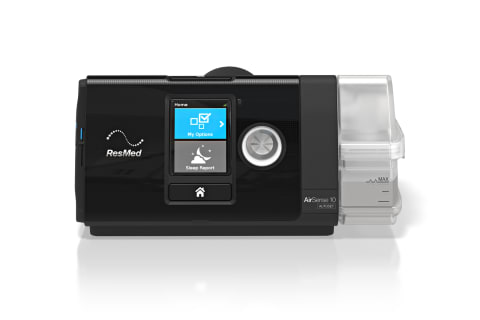 Further $50 Off with code "XMAS50"
ResMed AirSense 10 AutoSet 4G CPAP Machine
Further $50 Off with code "XMAS50"
ResMed AirSense 10 AutoSet 4G CPAP Machine
 Philips Respironics DreamStation Auto CPAP Machine with Humidifier
Philips Respironics DreamStation Auto CPAP Machine with Humidifier
Improved sleep quality and reduced snoring
By keeping the airway open, CPAP therapy can dramatically improve sleep quality and many related symptoms. In practice, regular CPAP use often means fewer nighttime awakenings, less snoring, and more time spent in deep, restorative sleep. Patients frequently report feeling more refreshed and alert during the day once their sleep apnea is treated.
People on CPAP often feel more refreshed and less sleepy during the day, with more energy, concentration, and a better mood, and even note benefits to blood pressure, diabetes control and reduced cardiovascular risk.
An especially noticeable benefit is reduced snoring. Since OSA-related snoring is caused by turbulent airflow through a narrowed throat, keeping that airway open usually stops the snoring. In fact, partners of CPAP users often report much quieter nights. Overall, by preventing the breathing interruptions of sleep apnea, CPAP not only improves oxygen levels but also lets patients and their bed partners enjoy a more peaceful, uninterrupted night’s sleep.
Different CPAP machines are available to suit your needs and condition
There are several types of positive airway pressure devices to match patient needs. The simplest is fixed-pressure CPAP, which maintains one steady pressure all night. Some patients find exhaling against this fixed flow tiring, so many CPAPs include pressure-relief settings that briefly drop the pressure during exhalation for comfort.
For patients requiring higher ventilation support, Bilevel PAP (BiPAP) machines provide two preset pressures – a higher one for inhaling and a lower one for exhaling. BiPAP is often used when fixed CPAP is not tolerated.
The most advanced form is Auto-adjusting CPAP (APAP). These machines continuously monitor your breathing pattern and automatically adjust the pressure breath-by-breath. Sophisticated sensors and algorithms detect subtle changes in airflow, snoring, or airway resistance. If the device senses a partial blockage or apnea, it raises pressure until breathing normalises, then relaxes back to a lower baseline. This automatic titration can improve comfort and adapt to changes in sleep posture, stage or nasal congestion, giving patients the lowest effective pressure each night.
Finally, there are travel-friendly CPAP machines for life on the go. These compact units (for example ResMed’s AirMini) deliver the same therapy but in a much smaller size. Many travel CPAPs include built‑in batteries and lightweight tubing, so you can use them on long flights or camping trips. With fixed, automatic and bilevel options – in both full-size and travel formats – you can choose a CPAP machine that best fits your clinical needs and lifestyle.
Trusted CPAP brands with proven comfort and reliability
When it comes to CPAP therapy, we offer a curated selection of top brands known for their quality, comfort, and innovation. ResMed is a standout leader in the field—its AirSense series (such as the AirSense 11 AutoSet) is packed with user-friendly features. These devices include an integrated HumidAir heated humidifier and automatic climate control, designed to prevent dryness and enhance comfort throughout the night.
Another excellent option is the Fisher & Paykel SleepStyle+. Engineered for simplicity and comfort, the SleepStyle+ offers a sleek, compact design and a quiet operation ideal for uninterrupted sleep. It features integrated heated humidification and SensAwake™ technology, which automatically reduces pressure to make it easier to fall back asleep after waking. The user-friendly interface and built-in connectivity allow you to track your progress and adjust therapy settings through a smartphone or tablet.
ALWAYS FOLLOW THE DIRECTIONS FOR USE. CPAP is used for Obstructive Sleep Apnoea treatment. When considering whether CPAP is right for you, speak to your doctor.
Frequently Asked Questions
How do I know if I need CPAP treatment?
If you suspect sleep apnea, watch for classic symptoms. Common signs include loud, persistent snoring, restless tossing during sleep, or waking gasping for air. Many sufferers wake feeling unrefreshed or report headaches, dry mouth or feeling unusually tired in the daytime. Bed partners often notice when breathing has paused (apneas) or when snoring ends abruptly with a choking sound. However, snoring alone doesn’t always mean you need CPAP – only about one in three snorers actually have sleep apnea.
The only way to know for sure is a medical evaluation. If OSA is suspected, a doctor will typically order a sleep study. This can be done in a sleep lab with overnight monitoring, or in some cases with a home sleep test. During the study, technicians measure breathing patterns, oxygen levels, heart rate and other signals to see how often breathing stops or is reduced. Your healthcare provider will review the results and grade the severity of any sleep apnea. If moderate to severe OSA is confirmed, CPAP is usually recommended as first-line therapy.
How does a CPAP machine keep your airway open?
A CPAP machine works by supplying a steady stream of pressurised air into your upper airway. This positive pressure acts like an internal splint. When you inhale, the airflow from the mask pushes gently on the throat tissue, holding it open. In effect, the CPAP blower generates just enough pressure to prevent the airway from collapsing under natural muscle relaxation.
Put simply, the device “splints” the throat like blowing up a thin tube: if left unpressurised it would flop shut, but with air inside it stays open. During normal breathing, you breathe in and out against this pressure.
How does a CPAP machine know when you stop breathing?
Fixed-pressure CPAP machines do not “know” in the sense of alerting or automatically changing settings – they simply continue blowing at the set pressure. However, auto-adjusting (APAP) machines and modern BiPAP devices use built-in sensors and software algorithms to detect changes in your breathing.
When an APAP machine senses that breathing has stopped or airflow is impeded, it automatically raises the pressure until normal breathing resumes. Likewise, if it notices snoring or flow limitation, it increases pressure to open the airway. Once breathing returns to normal, the machine gradually lowers the pressure back down. The exact algorithms vary by manufacturer, but the effect is the same: the machine is actively adjusting to your needs.
Where does the exhaled air go in a CPAP machine?
Exhaled breath is expelled through special vents, not recirculated back to you or into the machine’s motor. Every CPAP mask and hose is designed with exhalation ports that continuously bleed a bit of air to flush out carbon dioxide. When you breathe out, the outgoing air simply exits through these vent holes in the mask and enters the surrounding room. Modern designs use woven‐mesh or micro‑diffuser vents that scatter the exhaled airflow quietly into the air.
As long as the machine is on, the incoming fresh air flushes the exhaled air out through the mask vent holes. The steady venting also keeps your mask from becoming a closed box – you are always breathing the machine’s filtered fresh air, not your own expired air.
Does Medicare Pay for CPAP Machines in Australia?
No — Medicare does not directly cover the cost of CPAP machines or masks in Australia. That means if you’re diagnosed with obstructive sleep apnoea (OSA), you generally won’t receive any direct financial assistance from the national Medicare system to purchase CPAP equipment.
However, there are other pathways that may help reduce the cost, depending on where you live, your income, health insurance, and whether you qualify for certain public programs.




